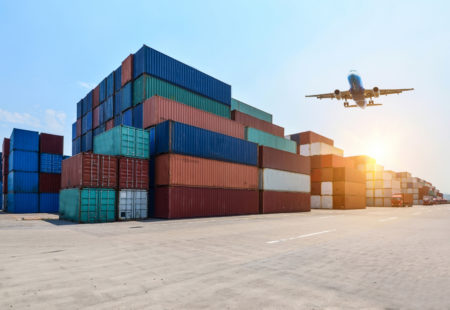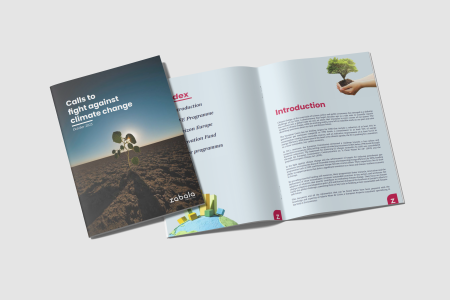
News
TRANS-EUROPEAN TRANSPORT NETWORK
CEF Transport 2022, new call for proposals to modernise transport infrastructure
It has a budget of 5,120 million euros to finance investments to develop trans-European transport networks
CONVERSATION
Our colleagues Igor Idareta and Maite García debate in this conversation about the goal of climate neutrality and the public resources to achieve it
Decarbonisation, green hydrogen, public funding, CAEs… What will be the winning bet to achieve climate neutrality goals in the coming years? Our colleagues Igor Idareta, team leader expert in European Programmes, and Maite García, leader of the Energy Area, discuss these and many more questions in a conversation on the challenge of achieving climate neutrality.
P. The European Union has set itself the goal of becoming the first climate-neutral economy and society by 2050. That commitment started in earnest in 2015, when the Paris Agreement was ratified. Since then, what has changed in the Union in terms of climate neutrality?
Igor. In 2015, with the Paris Agreement, what we saw was a firm commitment to make Europe the first climate neutral continent by 2050. And from there, we basically had three key steps:
In fact, the best example is a news item from last week, when the European Commission authorised for the first time 900 million euros in aid to set up a giga-factory for battery cells in Germany.
Maite. Spain is not lagging behind and is accompanying all this development and the European commitment. And we are not leaders by chance. This is a project that began in the 1980s with the Almeria solar platform. In the 1990s, the first wind farms. By the 2010s, there was already a large amount of renewable power installed in Spain.
Almost at the beginning of the 2020s, we began to hear that the installed renewable capacity exceeded the installed capacity of other technologies. The reduction in the cost of materials, especially photovoltaic panels, has also played a role. The step that has been taken in profitability, that renewable energies are now cheaper than fossil energies.
Q. How important is public funding in achieving the goal of climate neutrality?
Maite. From a national point of view, the PRTR allocates more than 40% of the budget to the ecological transition. This includes various sustainability issues, environment, restoration of degraded areas, water, etc. But if we focus only on the issue of energy, specifically in the PERTE ERHA allocates more than 5,000 million euros to deployments and campaigns to promote renewables.
But there are also other iconic PERTEs, such as the Decarbonisation PERTE, the VEC, or the Agri-Food PERTE, which also seeks to incentivise investments that are more environmentally friendly or that consume less energy.
The administrations are aware that a boost is needed, that companies need to see signs and support when making their investment decisions. So, public funding is key to be able to give signs to companies to invest and to achieve shorter payback periods.
Igor. That is true. In fact, Europe has always been very conscious of the catalytic effect of public funding. And, in fact, traditionally, in its regular programmes, it allocates a large part of the funding precisely to sustainability. More than 30% of the EU budget between 2021 and 2027 is earmarked for sustainability. We are talking about 580 million euros.
Q. How important is public funding in achieving the goal of climate neutrality?
A. Even when we talk about innovative projects, 35% of the projects are oriented precisely towards innovative projects that are aimed at climate action.
And a novelty, in terms of public incentives that are being initiated in Europe, is precisely to try to attract the private sector, not only with public funding, but also through indirect incentives and regulatory facilities.
Q. What are the main programmes and tools to achieve climate neutrality in Europe at the end of the main programmes that are being implemented?
Igor. We could divide the main European programmes into three areas: innovation, environment and social inclusion.
In innovation, the main ones are Horizon Europe and Innovation Fund. In environment, we go to the classic LIFE programme, which is a pioneering programme that started in 1992. It is also important to highlight the social inclusion programmes because they try, precisely, to help those sectors and regions that are going to be affected by the whole decarbonisation process. Here we find, for example, the Social Climate Fund, the Just Transition Mechanism and the Modernisation Fund.
In this regard, it is worth highlighting the 11 Innovation Fund projects financed for our customers, with more than 400 million euros raised. More importantly, these projects will reduce up to 9 million tonnes of CO2 in the coming years.
Another milestone achieved is funding the first integrated cross-border LIFE. Through this project, along the Pyrenees mountain range, the eight competent regional administrations have obtained funding of more than 12 million euros, with the aim of improving the resilience of these regions to climate change.
Maite. In Spain there have always been projects that fund research and development of energy technologies. What makes the current moment different from others is that money has come through the PRTR to make calls for proposals where deployment is rewarded, so that an effective transformation can take place. So we have calls such as MOVES (aimed at electric mobility), others based on innovative renewable energies (biogas, biomethane, etc.).
Another line that is also included in the PRTR calls is the storage and flexibility of the electricity grid. In this sense, the role of electricity grids is particularly important in the whole strategy of decarbonisation and electrification of demand. In this sense, the role of electricity grids is of particular importance in the whole strategy of decarbonisation and electrification of demand. Finally, it is important to highlight hydrogen as a vector for the future that is driving the transformation of our industries.
It is also important to point out other types of calls for proposals that are newer and perhaps not so much on the radar, and these are those derived from energy consumption savings. And here the Energy Saving Certificates (CAE), which were launched in 2023, are particularly relevant. We anticipate that 2024 will see their real implementation… The EECs are going to be a turning point in energy efficiency and a real help for companies, for decarbonisation and for learning to consume better.
Q. Why is renewable hydrogen set to gain prominence in the energy transition?
Igor. In recent years, when we talk about decarbonisation, everyone thinks of photovoltaic developments, wind power… But we have to realise that we also have a number of sectors that are more difficult to decarbonise, such as heavy transport and energy-intensive industries. And for these sectors renewable hydrogen is the solution.
“We also have a number of sectors that are more difficult to decarbonise, such as heavy transport and energy-intensive industries”, Igor Idareta
Maite. In Spain there are already experiences of decarbonisation from renewable hydrogen. At Zabala Innovation we have financed 12 unique and pioneering project proposals, which is in line with the hydrogen roadmap for Spain. The thing is that this roadmap was written in 2020 and a lot has happened in Europe since then.
The war in Ukraine changed everything. There is no longer access to abundant, cheap natural gas without questioning where it comes from. That is why a European response is needed, to think more at the level of the continent. And in this sense, renewable hydrogen is a market that is still to be created.
Igor. That’s true, yes, and precisely the differential of this new market is that it doesn’t exist. It is a new market that we are seeing right now with initiatives such as the renewable hydrogen auction, which is being driven by the public authorities. But even so, we do not have a clear vision of the future scenario.
Maite. Of course, because there are questions to be answered: Do we decarbonise ourselves first? In other words, do we use the hydrogen we produce for our industries? Are our industries more competitive because they have to pay less emission rights? Do we produce electricity here and send it to the continent and produce hydrogen in situ?
It is a market that is still to be created, and in the next few years I think we will see a path of orderly growth so that it will be truly competitive and we will see the best solutions, both technological and economic, that will lead us to the decarbonisation of industry.
Q. What role does Zabala Innovation play in the decarbonisation process?
Igor. Zabala Innovation is a key player in this decarbonisation. Our experience in the management of European funds, in the development of clean technologies and in sustainable projects positions us precisely as a key player to be able to bring together the private sector and the public sector in projects that will take us down the path to decarbonisation.
Maite. One issue that always comes up when we talk about public funding is control, that all public money is well audited, that it is known what the money is invested in. And in this, Zabala Innovation can help both the administrations, so that the money is well audited, and the project developers, to whom we provide security in each of the steps they take and execute.

News
TRANS-EUROPEAN TRANSPORT NETWORK
It has a budget of 5,120 million euros to finance investments to develop trans-European transport networks

Opinion
HORIZON EUROPE

Camino Correia
Head of European Projects / Executive Commitee

Publication
CLIMATE CHANGE
In this downloadable document, you can explore the specific calls dedicated to this theme from programs like LIFE, Horizon Europe, and the Innovation Fund
We collaborate with public administrations to promote innovation and assist companies in integrating innovation into their overall strategy.
To maximise the success and impact of a project, we manage the communication and dissemination activities, but we also define a social innovation strategy and tools to measure its impact.
We can help you with cascading funding, an EC mechanism that distributes public funding to help SMEs develop digital innovation.
This website uses cookies so that we can provide you with the best user experience possible. Cookie information is stored in your browser and performs functions such as recognising you when you return to our website and helping our team to understand which sections of the website you find most interesting and useful.
Strictly Necessary Cookie should be enabled at all times so that we can save your preferences for cookie settings.
This website uses Google Analytics to collect anonymous information such as the number of visitors to the site, and the most popular pages.
Keeping this cookie enabled helps us to improve our website.
Please enable Strictly Necessary Cookies first so that we can save your preferences!
This website uses the following additional cookies:
(List the cookies that you are using on the website here.)
Please enable Strictly Necessary Cookies first so that we can save your preferences!